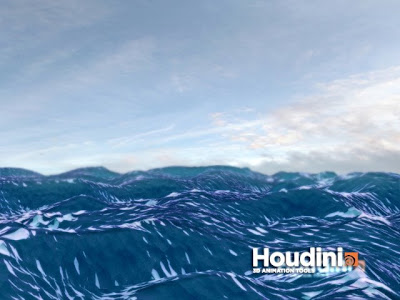
heres a crack at an ocean scene,
not happy with it yet...but its been interesting.
ill have to find a model to stick in the water...
i got a SSS pass in there but its hard to tell if it really working properly.
no white caps yet and no tru Zdepth yet - my dodgey ZDepth was made by using an edge detect on the alpha of the water essentially creating a horizon line then blurring this and adding it to itself for the desired effect.
this was used as a mask for desaturation and SSS as well as blur.
the spec is bloomed out as well...all comped in Houdini :)
edit: next time i might try and reduce the wave height in relation to zDepth to try and
fake the scale of the scene - like a perspective cheat...any ol' trick to reduce rendering times on my old box.
edit: looking at other peoples work - i realised
i can fake the distance with a flatten effect based on camera distance.
-----------------------
some more shader practice:
simple opacity

dont forget:
the RGB has to be multipled by the Alpha to get some black for the OPACITY.
in this example i had a 32 bit TGA - which i then broke into its RGB vector and a 4th float value (the alpha) with a convert VOP
(convert Vector4 to Vector)
an image with an alpha channel may need the 'premultiplied' treatment.
- this can be done in COPS.



















